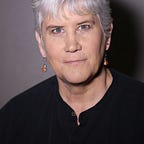Self-Similar Uniqueness of Fractal Consciousness
A Raising Consciousness Now and Brain Health Essay.
Different
I know, I am different from you. I also know that I share 98 percent of my DNA with chimpanzees. And that means you and I are even more similar. What we each focus on makes the real difference between you and I. Are we similar enough for me to feel comfortable sharing my thoughts, expressing my feelings? Or are we different enough for there to be something I can learn from you? Are we fractal parts of a whole?
What is your perspective on the information bridging the gap between you and I?
Eleven million bits per second!
That is an estimation of how much information is sent to your brain for processing. It includes the light reflecting from a child’s expression as he or she looks into your eyes, sound waves from the easy listening radio show bouncing on your ear drum, the smell of a crisp fall day as the wind blows through an apple orchard, the taste and crunch of a sweet juicy pear or the way your loose cotton shirt covers the skin of your shoulders.
The human body sends 11 million bits of information per second to the brain for processing, yet the conscious mind seems to be able to process only 50 bits per second. The rest are lost in transmission. The difference in those two numbers is staggering. We consciously process so little of the information around us.
Once the light waves, sound vibrations, temperature and pressure information has touched your eyes, ears, nose, mouth and skin, it has to be translated into electrochemical signals carried by the nervous system. And more is lost in translation.
Then we overlay the information with our feelings laced with past experiences, expectations of reward and punishment or beliefs about what is good and bad.
It is remarkable that we are able to filter out the “noise” and be certain of anything. But what is “noise.” Is it the ways in which we are the same and being the same find comfort in being with each other? Or is it the ways in which we are different from each other, because we are each uniquely individual.
As the saying goes, “You are unique, just like everyone else.” Every second we are choosing to pay attention to music and ignore the noise. Each second we are choosing to see the similarities or the difference. We are choosing what information to “tame” or to build a relationship with.
The Little Prince in Antoine de Saint-Exupery tale says to the fox, “Come and play with me. I am so unhappy.”
“I cannot play with you,” the fox said, “I am not tamed.”
“I am looking for friends. What does that mean — tame?” said the little prince.
“It is an act too often neglected,” said the fox. “It means to establish ties. To me, you are still nothing more than a little boy who is just like a hundred thousand other little boys. But if you tame me, then we shall need each other. To me, you will be unique in all the world. To you, I shall be unique in all the world . . .it will be as if the sun came to shine on my life. I shall know the sound of a step that will be different from all the others. Other steps send me hurrying back underneath the ground. Yours will call me, like music out of my burrow. You have hair that is the color of gold. Think how wonderful that will be when you have tamed me! The grain, which is also golden, will bring me back the thought of you. And I shall love to listen to the wind in the wheat . . . Please — tame me!”
Originally published at https://www.raisingconsciousnessnow.com on March 14, 2017.
